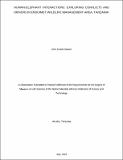| dc.description.abstract | A globally rapid land use/land cover change in human-transformed landscapes alters the interface of
human-wildlife interactions due to shifting socio-ecological and environmental pressures.
Understanding these shifts is crucial for mitigating repeated negative interactions that escalate
conflict states between people and wildlife. This study aimed to understand land use/land cover
change changes between1989–2019, with more recent spatio-temporal patterns of high pressure at
the human-elephant interface, and potentially underlying environmental and human driven factors
that affect elephant movement patterns. The study analyzed a dataset of 923 human-elephant conflict
occurrences, mainly crop foraging incidents in the Enduimet between the years 2016 and 2020 and
combined these data with land use/land cover change for year 2019 to understand potential drivers
of conflict. Furthermore, GPS datasets of elephants collared between 2019 to 2020 used to
understand elephant movement patterns in changing land use types. Landsat image study revealed
that 41% of the area had been converted into farmlands and settlements within the last three decades,
which creates elephant-intolerant habitats and the potential to increase pressure at the human elephant interface. The collared elephants using Enduimet moved through all land use types and did
not avoid settlements, although they moved through these at higher speeds, reflecting perception of
risk. Elephants travelled slightly more slowly in farmland, likely reflecting the availability of
foraging opportunities. Conclusively, communities in land use/land cover change urgently need
support to increase the effective distance between their farming activities and the protected areas. | en_US |

